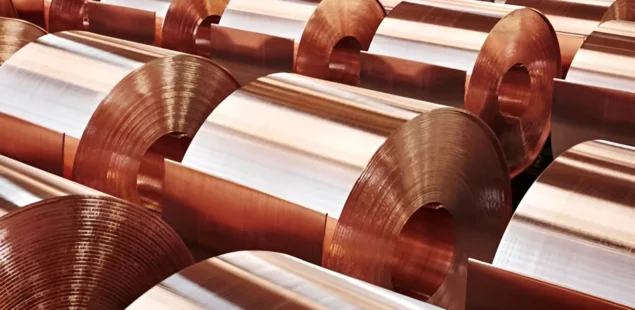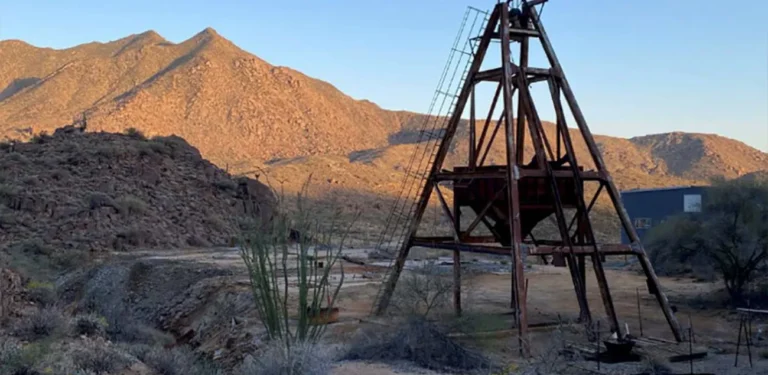
BHP Group to cooperate with CATL
Last week’s news flow was dominated by developments in the United States, one of the world’s largest producers and consumers of metals. Against this backdrop, BHP Group announced a memorandum of understanding with Contemporary Amperex Technology (CATL) that sets the stage for wide-ranging collaboration in battery technology. According to BHP’s press release, the partners will examine ways to develop batteries for mining equipment and locomotives—together with fast-charging infrastructure—as well as stationary energy-storage systems. They will also study advanced battery-recycling options, all in support of BHP’s goal of net-zero Scope 1 and 2 greenhouse-gas emissions by 2050.
BHP emphasises that the venture will promote a circular economy by improving recycling processes, for example by integrating copper mines into more sustainable value chains. Notably, the company has never committed capital to lithium or rare-earth projects—materials essential for electric-vehicle batteries and wind-turbine magnets—because its investment strategy demands high margins and large markets. Lithium prices have plunged in recent years, and the rare-earth sector remains too small for a producer of BHP’s scale.
Even so, BHP’s Xplor accelerator is already supplying venture finance to junior explorers hunting for critical minerals such as nickel and copper across Europe, South America and North America. If lithium market conditions improve, or if rival Rio Tinto gains traction, BHP could still enter the lithium space—whether by backing explorers through Xplor or by making larger, as-yet undisclosed investments.
Aurubis to expand operations in the US
German non-ferrous group Aurubis has earmarked €1.7 billion for global expansion and will devote €740 million of that sum to a new US plant that will turn copper scrap into cathode copper. Government data show the United States smelts 850,000 tonnes of copper from ore and 40,000 tonnes from secondary feedstock, yet consumes 1.6 million tonnes, relying on imports from Chile, Canada, Mexico and Peru to bridge the gap. Paradoxically, the country exported almost 960,000 tonnes of copper scrap last year—41 percent of it to China.
Aurubis chief financial officer Steffen Hoffmann says the planned facility will be the first in the United States capable of converting heavily contaminated scrap into London Metal Exchange-grade cathodes. The investment is timed to coincide with a new 50 percent import duty on copper, due to take effect on 1 August after being announced by President Donald Trump. The tariff has already propelled Comex copper futures above US $12,500 per tonne, widening the premium over London prices and boosting the economic case for domestic recycling.
Long-term demand is robust: an average electric car contains 80 kilograms of copper, a marine wind turbine 40 kilograms, and a data centre about 30 tonnes, with its cabling replaced every three to five years. These applications will generate growing scrap flows, providing feedstock for Aurubis and for other recyclers that are almost certain to follow.
Ivanhoe Electric wants to start copper production in record time
Canadian junior Ivanhoe Electric has completed the preliminary feasibility study for its Santa Cruz project in Arizona. Mining will use the room-and-pillar method, with a compact underground rail network that minimises diesel consumption. Surface processing will rely on heap leaching. The operation is designed for a 23-year life and annual output of 72,000 tonnes of copper cathode during its first 15 years.
Founded in 2021 by mining entrepreneur Robert Friedland, Ivanhoe Electric employs proprietary geophysical technologies to explore for copper, gold and other metals. After raising US $169 million in a 2024 Nasdaq debut, it now holds properties in Utah, Oregon and Montana alongside its Arizona flagship. The company has already invested more than US $100 million in drilling and plant design, and chief executive Taylor Melvin notes that the deposit benefits from existing road, rail, gas and power connections.
The plan is to begin mining next year and deliver first cathodes by end-2028—a pace rarely seen in an industry where development can drag on for decades. Ivanhoe forecasts operating costs of US $1.32 per pound, roughly one-quarter of today’s Comex price. The Comex premium over London has risen rapidly and now stands at US $1,800 per tonne. Yet only two US smelters treat copper ore, forcing miners to ship 29 percent of concentrates overseas, mainly to China. Permit hurdles have left the national industry dependent on foreign smelters even as domestic mine output declines.
Rio Tinto suffers losses from Donald Trump’s actions
Rio Tinto estimates a US $300 million hit from the US president’s decision to double aluminum-import tariffs to 50 percent. The group shipped 723,000 tonnes of primary aluminum to the United States in January–June 2025—about three-quarters of the output from its Canadian smelters.
A 25 percent tariff imposed in March had been offset by a jump in US Midwest regional premiums, but the June hike to 50 percent has not produced the same cushioning effect, even though premiums have risen 164 percent since January to US $1,279 per tonne. Buyers are increasingly turning to remelted scrap and billet, which are exempt. Further premium increases might cover the duty, but would also curb demand for primary metal.
Canada produced 3.3 million tonnes of primary aluminum last year, while US output was just 670,000 tonnes, pressured by high electricity costs. Canada nonetheless supplies nearly 60 percent of US aluminum imports; the United Arab Emirates, Bahrain and China trail far behind.
Tariffs are part of Donald Trump’s broader strategy to bolster US non-ferrous metals. In early 2025, Century Aluminum launched plans for a new primary smelter after securing a US $500 million Department of Energy grant tied to legislation enacted under former president Joe Biden. Emirates Global Aluminium soon followed with a US $4 billion proposal for a 600,000-tonne US smelter—an announcement that coincided with the UAE’s broader commitment to channel US $200 billion into the US economy. Aluminum, indispensable to automotive production, food packaging and many other sectors, remains a strategic metal for Washington.
AngloGold Ashanti strengthens its position near the Pacific Ocean
AngloGold Ashanti has agreed to acquire the Canadian company Augusta Gold for US $111 million in cash—28 percent above the previous day’s close and 37 percent above the 20-day average. AngloGold will also repay shareholder loans to Augusta Gold. The deal secures a foothold in Nevada’s promising Beatty district through the Reward project, the Bullfrog deposit and surrounding ground. “We believe these properties will not only cement our position in a key US gold region but will allow us to advance development under a comprehensive plan,” chief executive Alberto Calderon said.
Earlier this year, AngloGold shelved talks with Gold Fields on merging Ghana’s Tarkwa and Iduapriem mines after 16 months of negotiations and regulatory reviews, deciding that each company should focus on its own assets instead. The company has also agreed to sell its Brazilian mine Mineração Serra Grande to Aura Minerals for US $76 million plus a 3 percent royalty, payable quarterly. AngloGold describes Serra Grande as one of its costliest, least productive operations; recent efforts have centred on stabilising output and retiring an ageing tailings dam.
Operating on four continents, AngloGold is the world’s third-largest gold producer. Following a 2023 restructuring, it shifted its primary listing from Johannesburg to New York and moved its headquarters to Denver. It ended 2024 with production of 2.66 million troy ounces, or 82.7 tonnes, of gold.



